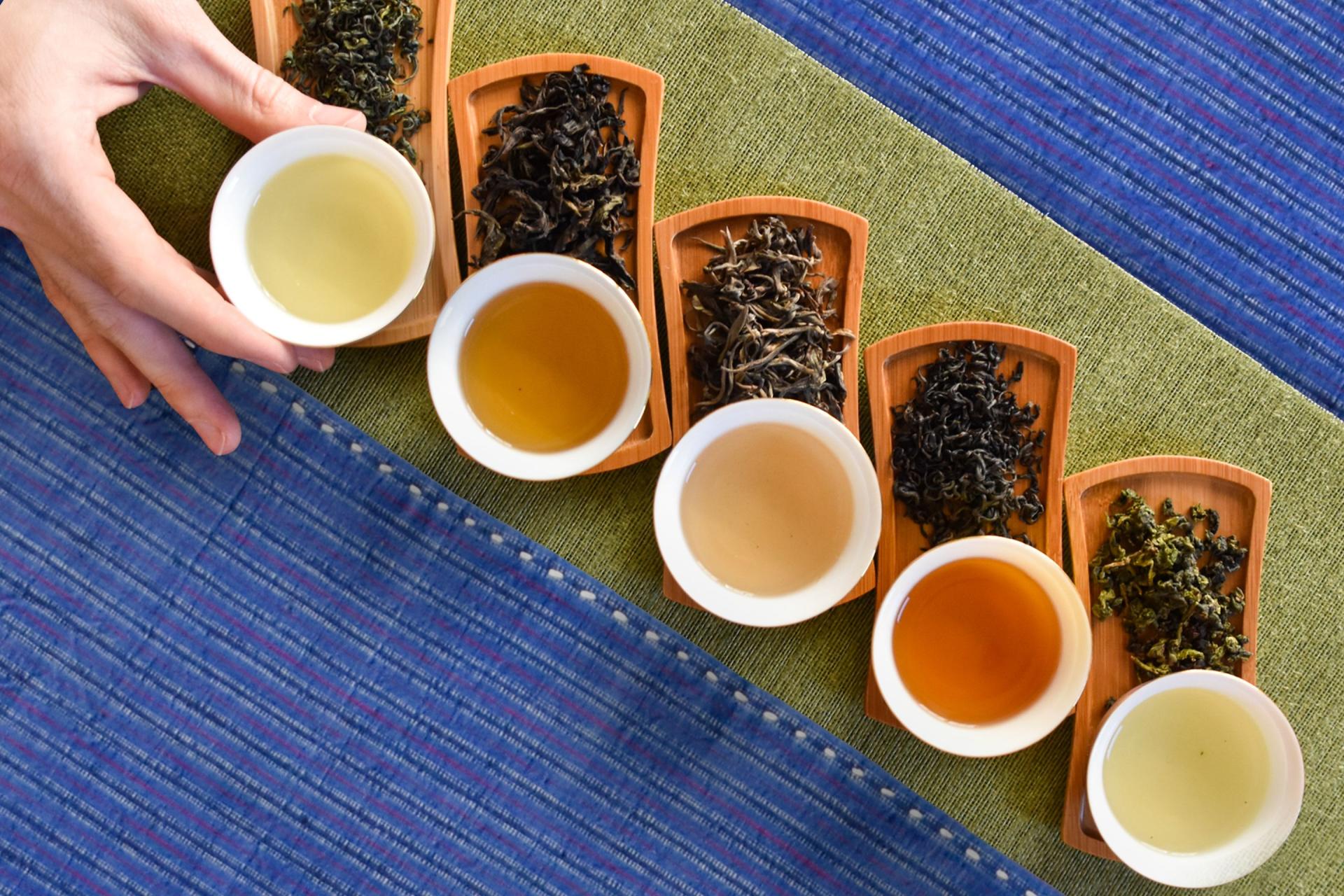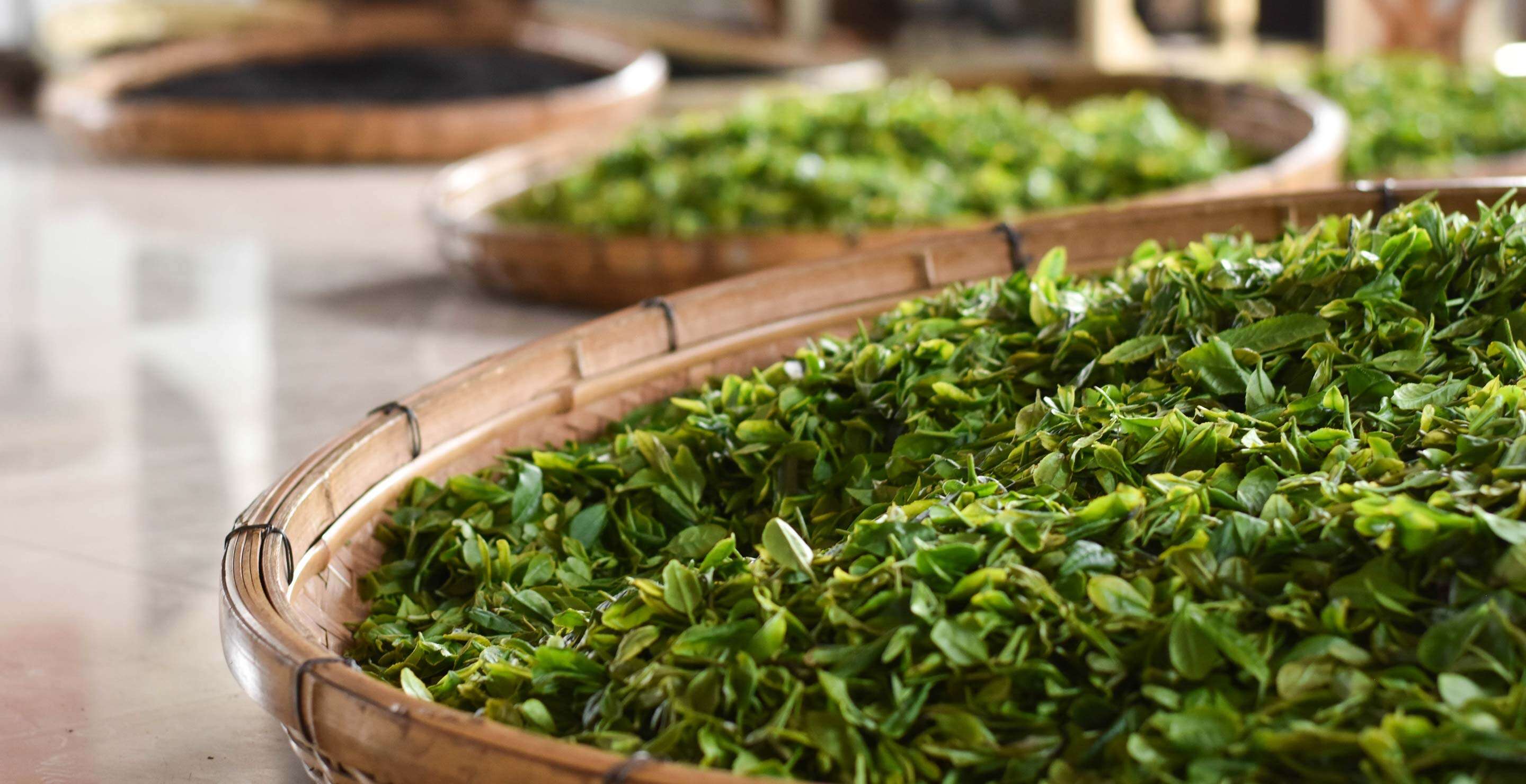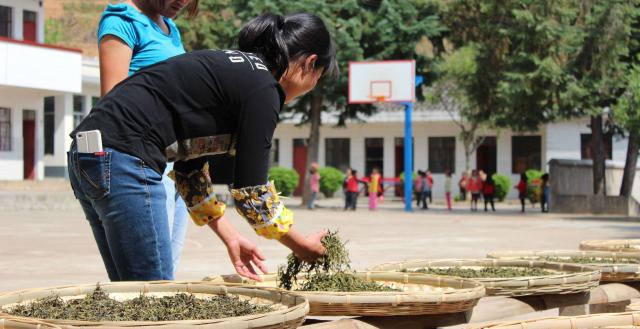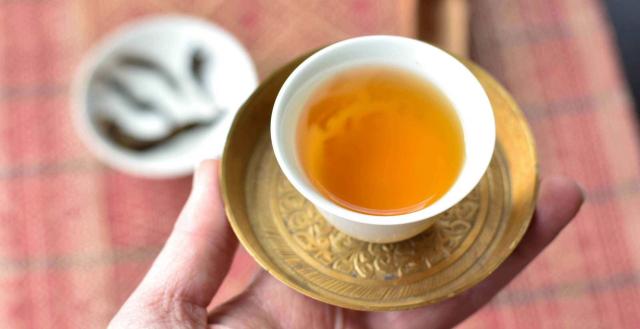Although loose leaf tea is not perishable, tea does expire.
In fact, by the time most tea hits the supermarket shelves, those teas are already old and past their prime.
What does this mean for tea lovers who want to know how long their teas should last?
We talked to the tea farmers themselves to find out how to store tea properly, how soon to drink tea after picking, and which teas actually get better with age.
WANT FREE TEA?


Sign up to get tea deals,
fun tasting journals and more
tea education with our special
Daily Deal Tasting Journal.
We’ll thank you with
a gift of free tea!
Freshness matters. Fresh tea tastes sweeter, and fresh teas are more aromatic, more complex, and packed with more antioxidants. That's why everyone goes crazy for fresh spring tea, and that's why so many tea lovers want to make sure their favorite teas do not go bad.
Luckily, expired tea is something you can avoid if you know what to look for and how to store your tea properly: seek out teas that list their picking date with transparency and keep your tea away from light, heat, and moisture to keep them tasting great.
"Seek out teas that list their picking date, and keep your tea away from light, heat, and moisture."


Can Tea Expire?
To answer this question, it is important to understand what a tea expiration date really means. The expiration date printed on a tea package does not actually tell you if a tea is fresh or not. Instead, the expiration date on a bag of tea only shows how long the seller is willing to take responsibility for consistency and for product safety, not how long the tea actually tastes good.
So, does tea go bad? Not exactly. High quality tea kept dry and sealed is safe to drink indefinitely. In fact, that’s why people crafted tea in the first place - fresh tea leaves can’t last as long as teas that have been crafted into green tea, black tea, oolong tea, and others.


However, while good tea does not go bad, it can go downhill, losing sweetness, complexity, and antioxidants as the leaves undergo a variety of chemical changes - especially if your tea is left out.
Lighter teas like green tea “expire” the fastest, while black teas and roasted oolongs hold their flavor and quality much longer. Some teas like pu’er are finished in a special way that lets them actually get better with age, like wine.




How Long Does Loose Leaf Tea Last?
Before you worry about how long a tea has been in your cupboard, consider how old a tea might be before it even reaches the shelf. Most tea stores do not source teas directly from the farmers growing and making their teas. Instead, teas pass through layers of distributors and importers around the world, and this means teas can easily be over a year old before you even buy them.
On the other hand, teas coming directly from small family farms are more likely to be fresh and flavorful. Direct sourced teas provide clear picking dates, and these teas have a much shorter journey from the farm to your cup.
In general, your tea should taste great for about one year after it was picked. Different tea styles do have different shelf lives, but if you get a fresh tea and you store it carefully, you can get the most out of your tea while it is still good.
How Long Does Black Tea Last?
The first black teas came from Wuyishan, China, and became an overnight hit in Europe thanks to their long shelf life. Black teas are fully oxidized - this gives them a longer shelf life than green tea, as well as sweet and malty flavors.
Because of oxidation, quality black tea can last for two years, and certain aged black teas can be enjoyed even longer.
-
• Always look for loose leaf black tea with a picking date listed
-
• Drink black tea within two years to enjoy their full flavor and aroma
-
• Expect aged black tea to take on deep woody flavors
Does Oolong Tea Expire?
Green oolongs are meant to be enjoyed within one year, while roasted oolongs can generally last for two years. Some oolongs are actually finished with aging in mind and last for decades, getting better, like wine. It all depends on how the tea was crafted.
-
• Greener oolongs are aromatic and hyper seasonal.
Make sure to choose teas with clearly listed picking dates -
• Most roasted oolongs are allowed to rest for a few months after they are crafted.
Once release, roasted oolongs last for about two years -
• Aged oolong teas are crafted specifically to last decades.
Look for aged oolongs with a clear age statement
How Long Is Pu’er Tea’s Shelf Life?
Pu’er (普洱) - sometimes spelled pu erh or pu-er - was an accidental discovery that proved some teas can actually become even better with age. Pu’er teas do not expire, and both sheng pu’er and shu pu’er are prized for the complexity they can develop over decades.
Interested in aging your own pu’er? Explore our top picks, and follow these tips:
-
• Avoid big factory labels that do not disclose their growers and sources
-
• Look for pu’er from small family workshops and biodiverse plots
-
• Good in, good out: pu’er with aging potential should also taste great when it is young
Does Green Tea Expire?
Green tea has the shortest shelf life of all teas. Fresh seasonal green tea is sweet - not bitter - and deeply aromatic. It can last for up to a year but, because green tea does “go bad,” it is best to drink green tea within six months.
-
• Look for seasonal green tea that lists both picking date and farmer
-
• Drink spring harvest in the spring and autumn harvest in the autumn
-
• Use older green tea for cold brew or cooking
How Long Does White Tea Last?
White tea is finished to lock in the freshest “tea” flavor possible, and well made white tea lets the natural flavor of the fresh leaves shine for months after picking. For fresher, green flavor, drink white tea within one year of harvest.
White tea can also be aged and - if properly stored - white tea does not expire. Instead, well-crafted white tea can develop deeply woody and herbaceous flavors over time.
-
• For fresh, sweet, floral flavors, drink white tea within a year of picking
-
• After a year of aging, white tea becomes darker and more toasty
-
• After many years of aging, white tea becomes cooling and spiced
Does Herbal Tea Expire?
Herbal tea’s shelf life is no different than green tea. Since most herbal teas (also called tisanes) are generally finished through simple drying, they are not ‘heat-fixed’ like black teas. Therefore, herbal teas are best brewed within a year of picking.
Some tea farmers - like the He Family in Laoshan and the Zhenyuan Dongsa Cooperative in Qianjiazhai - are applying experimental tea craft to herbal teas. This additional craft extends the shelf life of our partners’ herbal teas.
-
• Look for herbal tisanes that say when they were picked
-
• Try herbals from farmers that are applying tea finishing techniques to herbal tea
-
• Use stale herbal tea for mixed drinks and cooking
How to Store Loose Leaf Tea
So you’ve found some great teas - congratulations! Now you might be wondering about the best way to store loose leaf tea so that it lasts as long as possible. This part’s easy!
Keep your tea away from light, moisture, and heat. Tea goes bad if it is left out.


Fun fact: Tea professionals are so concerned about the way the environment changes a tea that even teaware for tasting is regulated for competition judging to keep everyone on the same playing field.


How to Store Green Tea and Green Oolong
Green tea and greener oolong teas are the most delicate and seasonal teas. Proper storage locks in their sweet flavors and aromas. A little effort means better tea for you year-round:
-
• Protect tea from air and moisture: Do not let your tea oxidize. Instead, store green tea and greener oolong teas in an airtight container to keep your tea fresh.
-
• Protect green teas from light: Do not use glass canisters to store your tea. Light can damage your tea and decrease its shelf life, so choose your material carefully and keep storage containers away from direct sunlight.
-
• Protect teas from heat: If it’s too hot for you, it’s too hot for the tea. Heat accelerates chemical changes, so store your tea away from direct heat sources.
-
• Enjoy green teas when they are fresh: Drink your most seasonal teas in the season they are picked to get the most out of them. Don’t save them - drink them!
How to Store White Tea, Black Tea, and Dark Oolong
Not all loose leaf teas go bad.
White tea, black tea and roasted oolong tea can last for several years if they are properly stored, and well-made teas can even become deeper and more complex over time. All you need to do is follow the same basic storage guidelines you would with green tea:
-
• Moisture is the enemy: Moisture control is very important to aging white tea, black tea and oolong. Keep your teas airtight!
-
• Protect teas from light: Glass may be pretty, but if your teas are left in the sun, you will have stale tea!
-
• Protect teas from heat and cold: Heat promotes chemical changes and can “overcook” teas, while cold creates conditions for condensation, moisture, and even mold.
-
• Enjoy your tea for years: Proper storage means you do not need to worry about your favorite tea going bad.
How to Store Pu'er Tea
When thinking about tea shelf life and the best way to store tea, pu’er tea breaks all the rules. Pu’er is made specifically to age for decades, and unlike other teas, pu’er tea is not sensitive to air or controlled moisture. In fact, pu’er tea requires some air flow and ambient humidity to continue aging.
Properly stored pu’er tea is an investment that yields deep, complex brews over time.
-
• Pu’er likes the same weather you do: Keep your pu’er happy with stable room temperature and comfortable humidity. Aim for 65-74 F and about 40%-65% humidity.
-
• Don’t seal your pu’er: Pu’er needs airflow to keep aging and to protect against mold
-
• Protect from strong smells: Keep your pu’er away from spices and the kitchen or it will absorb those smells in the air. Linen closets or office drawers work well.
-
• Do not drink moldy pu’er: if you notice white mold spots on your pu’er, throw it away. Pu’er stored with too much humidity and condensation can go bad, so avoid storing your pu’er in basements, bathroom closets, or similarly damp environments.
How to Tell If Tea Is Still Fresh
It’s easy to tell if you have stale tea. Simply open your bag or canister and smell.
If you cannot smell anything, then the tea is stale.
All good tea is aromatic. Most of our sense of taste is tied to smell. If the tea has no aroma left, it has no flavor left, and it’s time to shop for fresh tea.


What to Do With Old Tea
Can you drink expired tea? Of course!
If the tea was made and stored safely, it is still safe to drink, even if it’s old.
The best way to use stale tea is to find a recipe that relies more on the tea’s texture as a background note and less on showing off big aromatics.
Our top picks include using the tea in homemade chai, cold brewing big batches of iced tea for summer sipping, or even using the tea in recipes like ochazuke.
Explore the World of Fresh Loose Leaf Tea With Verdant Tea
Fresh tea is flavorful tea, and freshness starts at the farm. Nothing is more important than knowing when your tea was picked, where it was picked and who picked it. Transparent sourcing and direct partnerships with small family farms guarantees that you start with the best.
Once you’ve found the tea you love, you can keep it fresh by protecting against air, moisture, heat and light. Even more important? Make sure that you drink your seasonal teas in the season they were picked. For aged teas like pu’er, simply start with the best and you won’t be disappointed as the tea keeps getting better over the years.
Our partners’ teas are so good that we keep an office in China just so that we can pack their tea up in airtight bags the moment it is harvested and rush air-ship on a weekly basis.
Want to get to know the award-winning farmers and craftspeople like Huang Ruiguang and He Changke and more? Join our farmer-curated CSA-style Tea of the Month club, or try a tasting kit from one of our partner-farmers.
This article has been updated from an older post, originally published January 14th, 2014.


 How To
How To Myths & Legends
Myths & Legends Travelogue
Travelogue Tasting Journal
Tasting Journal Talking Shop
Talking Shop Tea 101
Tea 101 Watch
Watch Teaware
Teaware News
News







Leave a Reply
Thank you for this article!
I have a lot of oolong drinking to do! sounds good to me - every day will be an occasion!
I do appreciate having this info all in one place - it will be bookmarked forever (until it gets in my head and I don't have to reference the page anymore).
This is great! It's definitely something I'm bookmarking as well. Glad that greens and green oolongs don't last as long, gives me an excuse to drink more and get more, right? :)
Definitely a needed and well appreciated article! There's so much being said out there, speaking mainly along the lines of pu'er storage, that it's nice to see an informed article telling me it isn't necessary to make a cave in my backyard for my tea (though, if it came to it, I may be willing to ;])
I want a tea cave, myself! I'm picturing something out of Batman, with a tea desk that rises from under the water.
I was going to send you and email inquiring about all this! I literally was thinking last week, "I wonder what david duckler would say about how to 'properly age' puer tea, and/or long time storage different kinds of teas!" Much appreciated!
I drink my green teas fast, but I always feel kind of bad about how fast I go through them sometimes. I think I should wait and save them for a special occasion, but now I know I don't need to. Plus, tea being relatively inexpensive I really don't need to!
oh goody. This knowledge is now enabling me to buy white tea in quantity. I had no idea that this least oxidized tea is more durable than greens.
I had no idea that white tea is more durable than greens. This is going to enable me to purchase more of this tea, as well as several black tea types in bulk. Plus I am reminded that puers are like living entities that don't like to be locked away from oxygen so I will remember to give it breathing holes.
That's why my greens have been going stale... TY for the article!
For me - keeping track of harvest season - logs - dates etc is what I need to work on! I will do better...I promise :) Great article - thanks David! Have a great trip to China!
Love the article - good to know!
Looks like I have some reorganizing of my tea collection to do - and prioritizing what I drink first!
I'm curious David, how do you store your teas that are available for sale for us, especially the oolongs, greens, and white teas? How do you keep them fresh for when we order them?
Hi Charlotte,
I store almost all of our tea in China actually. Because we are such a small company and I can't invest in all the vacuum sealing equipment and walk in coolers I would want, I will buy up a harvest in Laoshan and let the He family store it for me in its orinal environment, vacuum sealed in small 250g bags and refrigerated. I will get enough tea shipped over for about 2 weeks and leave it all sealed until the tea is ordered. Bags are only cut open to pack, so the tea is not exposed to outside air for more than 30 seconds or so before being sealed in our durable bags. Next year, we might do more of our own storage if business keeps growing. That would allow me to keep more tea in stock at a time.
Wow, I would not have guessed that. I thought you had it all shipped over at once and kept it all stored in refrigerators or freezers on site. Hopefully with all the business you have been accumulating you will be able to do more of your own storage.
Thanks for the clear write-up! I appreciate that your reasoning is backed up with facts.
I keep my tea in glass canning jars in a dark cupboard. I always cut off the label and add it to the jar. The cupboard itself is dedicated only to tea and innocuous staples like flour that won't affect the flavor of my tea. It works out pretty well.
good to know! i wont be buying a lot of greens then. just enough to consume within a few months :)
Great information! Go figure, my favorite tea has the shortest shelf life. It's good to know this, but now I have to focus on drinking through my current stock of green teas before buying more.
Love the article very informative. Also loving the new tins!
Interesting! I didn't understand that different teas required different storage techniques. Thanks for writing!
Thanks for the article, i have a question though, my friend is telling me that i should't use metal cases for storing tea, that it can hurt the tea. Can someone shed some light on this matter? Thanks!
Good to know this in anticipation of my first order from you. With such exquisite tea, I almost feel a bit anxious about learning how to best enjoy them and how to store them properly.
Always happy to help, however we can. Happy sipping!
Tea is my grandma's favorite drink and she can't skip it in the mornings and I see her keep her tea in a jar made from ceramic and put it a dry place.
Hi Abigail,
Sounds like your grandma is a pretty cool lady! Thank you for sharing :) Many of our friends also store their teas in ceramic jars, especially roasted oolongs, black teas, and pu'er.
I'm not a fan of tea but sometimes have a cup of oolong tea a replace of coffee, and it tastes good. Thanks for sharing these great tip.
Our pleasure - thank you so much for reading! One of the great things about tea is the fact that there are so very many kinds of tea, and each has their own flavor. I have a feeling a tea you'll love is out there somewhere.. :) Until then, have fun exploring!
I was wondering if I should separate my sheng and shu pu'er teas while storing and aging? Some of my shu teas - such as the 2000 Big Leaf Shu - emit stronger, unique smells and I am worried that it will impact my shengs and even other shus if I store them in the same location. I am considering dedicating a cabinet solely for shengs and one soley for shus. Am I "tea-crazy", or could that forest-mossy smell (that I absolutely love) be absorbed by other sweeter shengs?
Hi Lou,
Great question! We do recommend storing sheng and shu pu'er separately, if you can. For very small collections, it is not too much of an issue, but when your collection reaches a certain size, it is both often more convenient and pleasant to store the two in seperate boxes. So no - :) you're not tea crazy! We store our collection in a few different boxes - right now, we have two boxes devoted to Qianjiazhai sheng (yep - we have so much!), another box dedicated to younger sheng (2007+), a box dedicated to older sheng (2005 and older), and a box full of just 2006 (we started our collection in 2008 and 2009, so 2006 still makes up a majority of our collection). We keep shu pu'er also generally seperated by years: younger (2006+) and older (2005-). Part of this is to keep like with like (as you describe), but also to make access easy - for example, when I'm in the mood for an old shu pu'er, I can simply pull down one box and take a look, rather than having to sort through a mixed collection.
As for aroma greatly impacting each other - I generally find that after the first wash and few steepings, any influencing flavors fade to nothing, and the true nature of your particular tea emerges. So yes, it could be absorbed, but in my experience it takes years and eventually fades after a few quick brews. Some feel that some of these teas may have different cultures that may influence each other, but it is difficult to say - much of that research is still being conducted, and is not particularly clear. It may be fun to break off a few small pieces, place them in a separate box together, and check on them in a few years :). The environment in your own home (do you live in a humid or dry place? Does the ambient temp change through the day, the seasons, the years?) will have a great and unique effect, and it is worth testing for yourself over the years to see what you think!
Does the storage container matter? For example, tins or jars (placed in cabinets of course)... someone in my family insists on plastic tupperware... and sometimes it seems as if the scents of stronger teas 'sticks' to the tins/glass unless I rinse with a light vinegar solution..
Hi Kate - great question! I usually recommend against plastic, as many plastics have an aroma which can leech into teas. Of course, not all plastics are created equally, and it is possible that a non-reactive and non-aromatic type may come around - just take care and look at your options on a case by case basis.
When you speak about aromas "sticking" - is this for containers you are reusing to hold new teas? I do thoroughly recommend cleaning between teas, especially if you are switching between something very aromatic. Glazed ceramic is a popular option for this reason, as the bodies can be easily cleaned. Unglazed ceramic and stoneware is a more popular option for storing pu'er, but then again, those teas benefit some airflow, and an airtight storage will retard or halt the growth (maturation) of the tea.
In general, we recommend containers that are non-reactive. If you have a stoneware jar that you love and you would like to store tea inside, there is nothing stopping you from following that preference. In these cases, however, I often find that I like to dedicate one storage container to a specific kind of tea - if only so that I can remember what teas I have stored where! Pressed tins benefit from good cleans and scrubs in between very differnt teas as they often have small nooks and crannies which can trap aroma and tea dust. This aroma will usually not have a large effect on whatever you store inside next, unless you are storing highly aromatic scented teas, blended teas, or teas with flavorings or oils.
Hello, I am new to loose leaf teas. My question is about storage. I have a FoodSaver vacuum sealer and I was wondering if I could use that to seal my tea. The bag is clear (I don't have foil bags for my sealer) but I plan to place the bag in a tea tin to save it from exposure to light. I happen to have a lot of tea tins a friend gave me since she had too many. I heard tins were good but I want to extend the life on my tea as long as possible.
Vacuum storage is definitely an option for some teas! You see it most often with rolled oolong teas. Their rolled shape protects the leaves against breaking against the side of the bag when the vacuum sucks everything in tightly. In contrast, I wouldn't recommend using a vacuum on a long, twisted strip-style oolong, because the action of the vacuum might end up breaking or crushing the leaves, which would change the flavor of your next brew.
This tea blog contains a lot of information about tea
I just loved this whole blog but especially I like the most how to store green tea and green Oolong and how to store
pu'er tea
thankyou so much for such an amazing blog